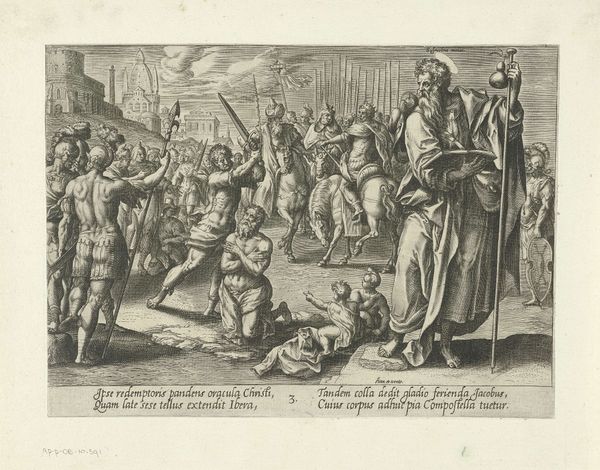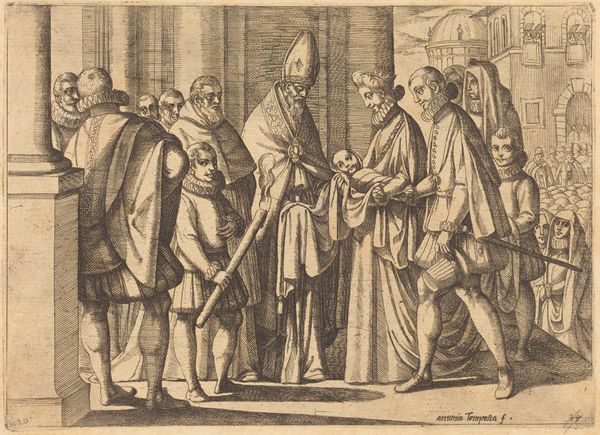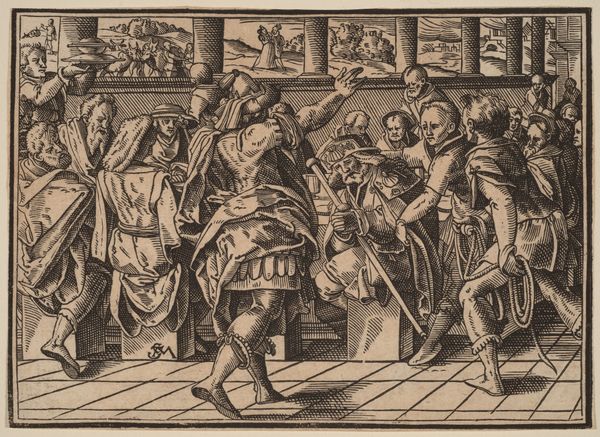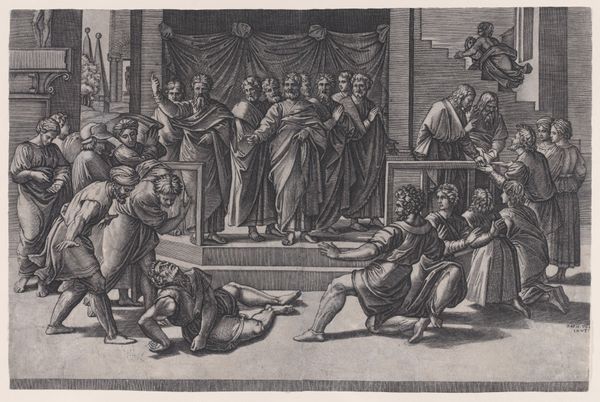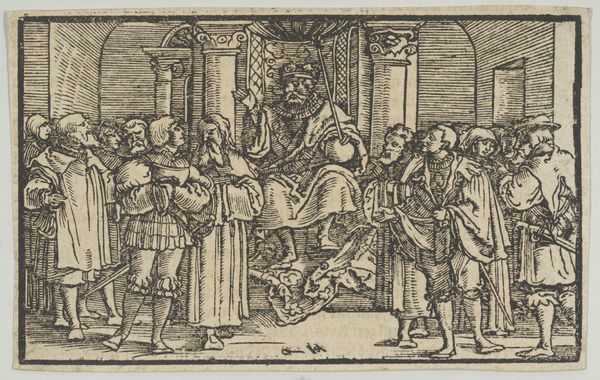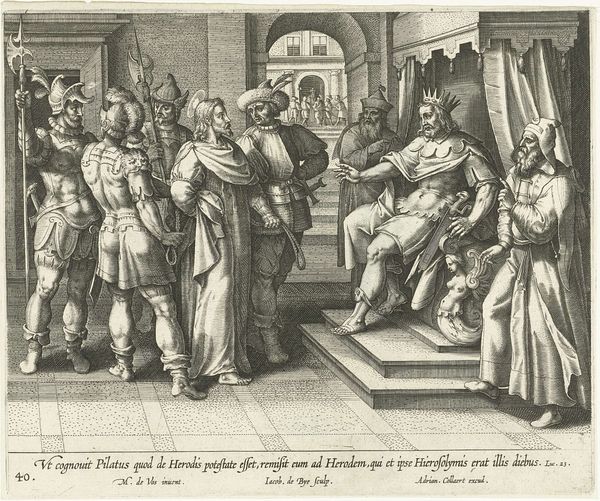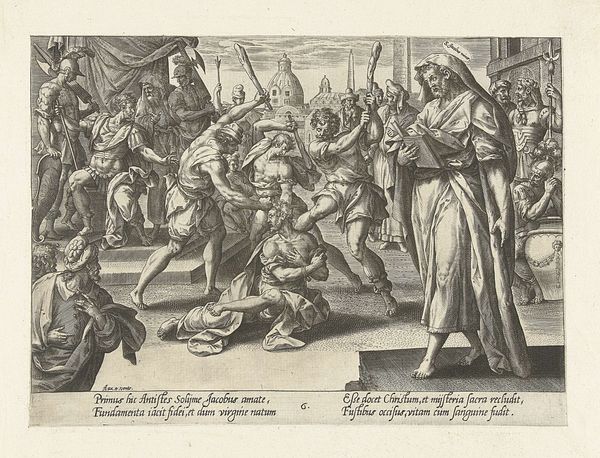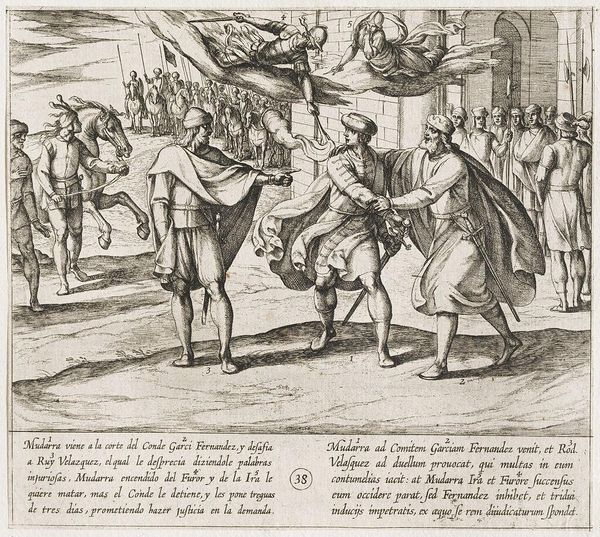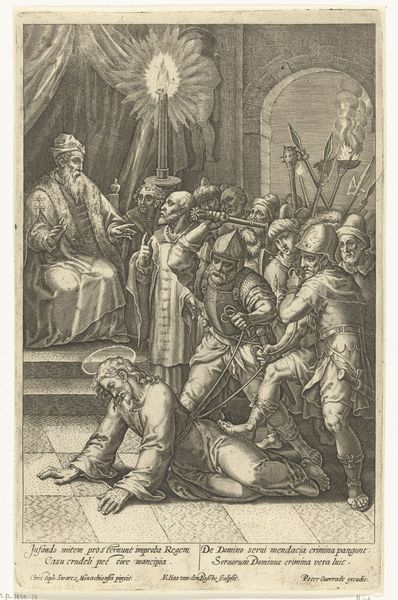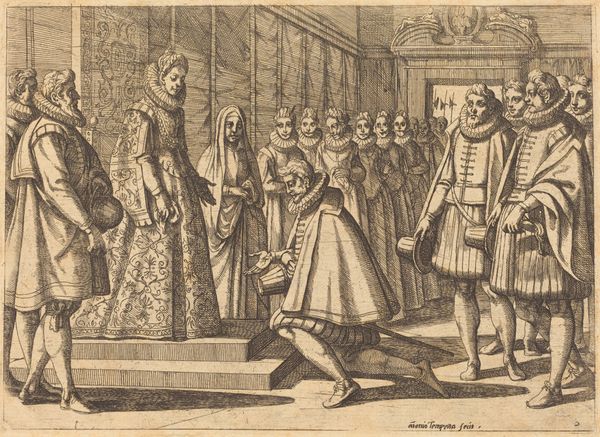
print, engraving
#
portrait
#
narrative-art
#
baroque
# print
#
figuration
#
genre-painting
#
history-painting
#
engraving
Copyright: National Gallery of Art: CC0 1.0
Curator: Antonio Tempesta created this print, an engraving actually, around 1612. It’s called "Spanish Duke before Margaret of Austria". Editor: My first impression? Power dynamics, absolutely. The formality is striking; it’s a study in deference. But there’s something… melancholic, too. Curator: Right? There is almost an emotional resignation. It is also visually beautiful in the sense of capturing a historical event; the details in the clothing and architecture really put you in that moment. The way light and shadow are rendered—despite just lines—is quite moving, if you consider this a ‘slice of life’ captured in that era. Editor: Absolutely, a slice heavily laden with protocol! It reminds me of how royal portraits of that time functioned. How they reinforce ideas about class and rank. We see the Duke kneeling—a performative submission, but the controlled setting and the expressions... What about that hooded woman just behind her. They almost act as extensions of authority. Curator: I think they speak volumes—quiet guardians maybe. She does seem lost in that ocean of fabric. Tell me what about the broader setting—does the tower and the harbor outside change your interpretation? Editor: It positions this personal act, a moment of respect and possibly negotiation or transaction in a much grander, more imposing arena. The suggestion of maritime power – the ships just beyond – speaks volumes about control, trade and even colonial ambition. It amplifies that overarching sense of powerful and influential forces coming to bear. Curator: I agree entirely – everything from the duke’s lowered stature to the distant ships underscores this moment. Editor: Seeing it through Tempesta's eyes helps reflect on the legacies and the ways that visuals actively reinforce norms of power that continue to shape our society, really. The intersectionality of race, gender, and rank represented here. Curator: Well said. Each viewing is a new lens, right? Editor: Precisely! These layers offer complex interpretations—that makes it such a great Baroque example of this moment in time.
Comments
No comments
Be the first to comment and join the conversation on the ultimate creative platform.
